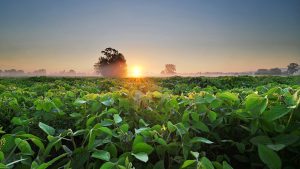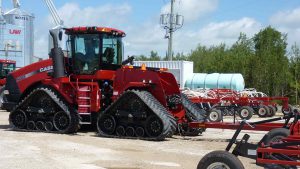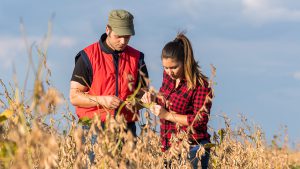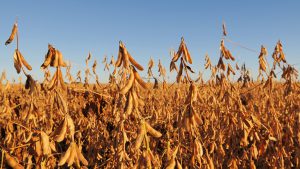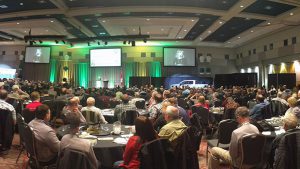Building healthy soils
A NUFFIELD SCHOLAR'S LIFELONG LESSON
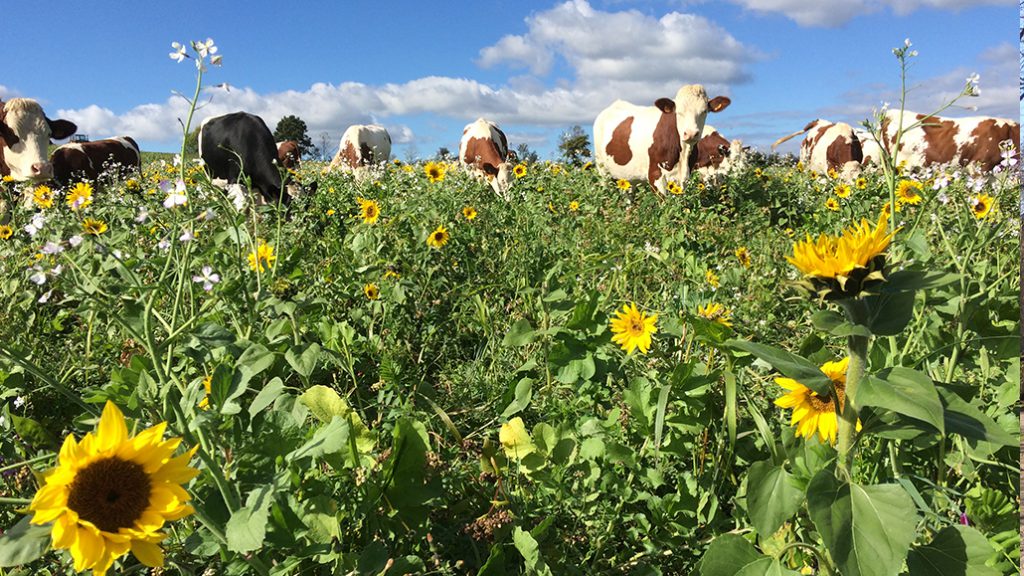
NUFFIELD SCHOLAR AND French farmer Sarah Singla doesn’t believe farmers inherit the soil from their parents so much as they borrow it from their children. In fact, she believes the success of any given civilization hinges on soil health, which is why she made it the focus of her 2011 Nuffield Scholarship. She continues to utilize the lessons from this travel study program every day on her farm in the south of France.

Singla’s family farm has been in no-till since 1980; she grows wheat, triticale, canola, alfalfa, buckwheat, and peas on more than 600 acres. While the farm was in no-till long before she took it over, she’s always looking for ways to improve soil health. She believes that the main threat to soil today is erosion.
“In the book called Dirt, they clearly explain that when a civilization destroys its soils, the civilization collapses,” says Singla. “There is no agrarian civilization that lasted more than five centuries, mainly because of the destruction of the soil.”
“Most of the crisis we see around the world has the same root: it’s first of all a soil crisis,” she continued. “If we have healthy soils, we will be more resilient. We will be able to grow healthy plants, healthy animals and to provide healthy food for people.”
HEALTHY SOILS
On her farm, Singla practices what she preaches. Her soil, for instance, is always covered with a living crop. Once the main crop is harvested, a cover crop is seeded.
“This cover crop will help stop erosion, it will recycle all the nutrients from the soil, will increase organic matter content, increase biodiversity on the farm, and help with water filtration,” she says. “It is a fantastic tool and it can become a crop to harvest too sometimes.”
Singla believes cover crops and no-till have improved her soil’s quality. “I see a constant improvement in my production, either in quantity produced or food quality,” she says. “The more biological activity we have in the soil, the more the nutrients are available for the plants.”
As a Nuffield Scholar, Singla was able to travel around the world to meet farmers who were also passionate about soil health. Her travels helped enhance her knowledge about soil fertility, no-till systems, and a more holistic approach to agriculture. It was through this network that she first heard about regenerative agriculture.
“We don’t want to do only conservation agriculture, which could mean to conserve and to maintain the soil in the same shape,” she says. “Our duty is to regenerate the soils in order to improve people health.”
On her travels Singla met many inspiring farmers, including Dwayne Beck in South Dakota and Lucien Séguy from France. From them she learned that introducing animals to the farm boosts soil biology and health. As a result, she decided to reintroduce animals to her farm when she returned from her travels. She also works closely with a neighbouring beekeeper.
“If you mimic nature, you won’t fail,” she says. “So I would say that the best way to improve soil health is to mimic nature by having a lot of diverse living plants throughout the year, by having animals grazing with the “mob grazing” technique, as is done in nature.”
KNOWLEDGE
Farmers looking to improve their soil need only one tool, Singla says, and that’s knowledge. “In the past we used to say to the young ones, ‘my son, you must study otherwise you will stay on the farm’,” she says. “Today, it is completely reverse… ‘My son, if you want to stay on the farm you must go study’.”
“Being a farmer today is to have one of the most complicated jobs in the world,” she continues. “We work outside and it’s dynamic because we are working with living things. It’s a job where nothing is constant — one year to the other, we know that we will never see the same things.”
But one thing is the same. No matter where you go in the world, food is grown in soil and the main threat to that soil is erosion.
“All around the world there are farmers who consider the soil as the main tool of production and who saw that by adopting regenerative agriculture we can also improve our quality of life and increase net margins,” says Singla. “We don’t have time anymore: it’s urgent to regenerate the soils. After all, SOS means Save Our Soils, non?”
You can follow Sarah Singla on Twitter at @SarahSingla. •























